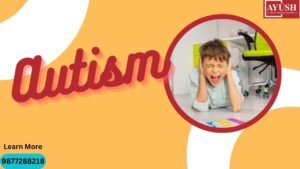 How Autism Impacts Different People: A Spectrum of Experiences
How Autism Impacts Different People: A Spectrum of Experiences
Autism Spectrum Disorder (ASD) is a neurodevelopmental condition that affects how individuals process information and interact with the world. No two people with ASD experience it in the same way. While there are some common characteristics, the severity, and specific challenges vary greatly from person to person. This is why it’s referred to as a spectrum disorder.
Here are some key points to understand how autism impacts different people:
1. Spectrum of Strengths and Challenges:
- Social communication: Difficulties can range from mild challenges maintaining eye contact to significant struggles understanding nonverbal cues and engaging in conversation.
- Interests and Repetitive Behaviors: Some individuals develop intense fixations on specific topics, routines, or objects, while others show less pronounced repetitive behaviors.
- Sensory Processing: People with ASD may be hypersensitive or hyposensitive to certain sensory stimuli like sound, touch, light, or taste, impacting their daily lives in varying degrees.
- Intellectual Ability: There is no link between ASD and intelligence. Individuals with ASD can have intellectual disabilities, be average, or even be gifted in specific areas.
2. Individual Differences:
- Personal traits: Individuals with ASD have unique personalities, preferences, and talents just like everyone else.
- Comorbid conditions: Some individuals with ASD may also have other conditions like anxiety, depression, or ADHD, further influencing their experiences.
- Environmental factors: Access to support, understanding, and appropriate accommodations can significantly impact an individual’s quality of life and ability to thrive.
3. Importance of Individualized Support:
- Recognizing the unique needs and strengths of each individual is crucial for effective support.
- Early intervention and tailored therapy can significantly improve outcomes and quality of life.
- Creating inclusive and understanding environments in schools, workplaces, and communities is essential for individuals with ASD to reach their full potential.
Remember, understanding the diversity of experiences within the autism spectrum is key to building a more inclusive and supportive world for everyone.
